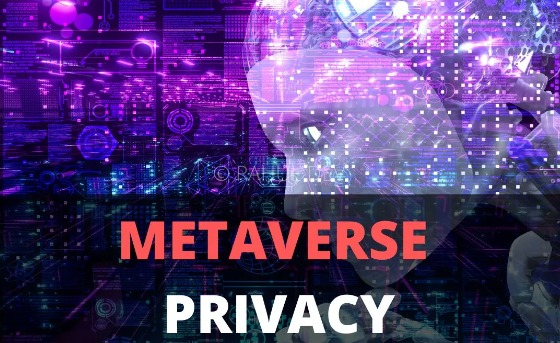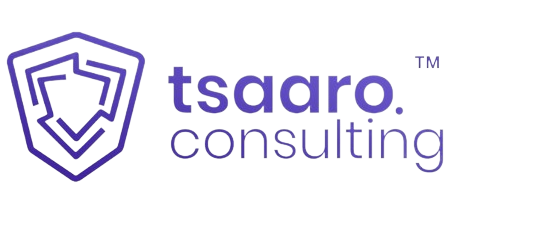Unlocking the Potential of Generative AI: Balancing Innovation with Privacy Generative AI is revolutionizing industries, but with great power comes great responsibility …
Privacy in the Metaverse
The Metaverse is an exciting concept that offers endless possibilities for socialization and entertainment, but it also poses significant privacy concerns. As users immerse themselves in virtual worlds and interact with others, their personal data becomes vulnerable to exploitation, theft, and misuse. To ensure the safety and security of users, it is crucial to address the issue of Metaverse privacy.
- Introduction
The Metaverse is an interactive virtual world that allows users to engage with each other in real-time, represented by avatars. This environment offers various possibilities such as gaming, socializing, shopping, and attending virtual events in a fully immersive experience. However, this advanced technology raises significant concerns regarding the protection of user’s personal information and data, highlighting the importance of privacy in metaverse. As users become more invested in virtual environments, it is crucial to address these issues to ensure that their personal data is secure, and their privacy is protected in the Metaverse.
2. How Metaverse Stands Out Among Other AR/VR Platforms?
One key difference between the Metaverse and other platforms like Decentraland or VRChat is the level of immersion and interactivity offered. The Metaverse is envisioned as a fully immersive and interactive virtual world that allows users to engage with each other and the environment in a seamless way. For instance, users can interact with virtual objects, attend virtual events, and even conduct business transactions in the Metaverse.
On the other hand, Decentraland is more focused on providing a decentralized virtual world where users can create, experience, and monetize content. While it does offer a degree of interactivity, it is not as fully immersive as the Metaverse. Similarly, VRChat is more of a social platform that allows users to create and share their own VR experiences, but it lacks the depth and complexity of the Metaverse.
Another key difference between the Metaverse and other platforms is the level of decentralization and ownership. The Metaverse is envisioned as a decentralized virtual world where users have greater control over their digital assets and identities. This is in contrast to platforms like Second Life, where users are subject to the platform’s terms of service and have limited control over their content and assets.

3. Metaverse and Data Privacy Issues
- A. Data Collection: One of the most significant challenges to privacy in the Metaverse is the collection and utilization of user data, which has prompted concerns about compliance with data protection regulation. The Metaverse relies on obtaining extensive data about its users, such as personal information, browsing history, and location data, in order to operate. However, the collection and usage of such data raise concerns about targeted advertising and the sale of data to third parties, among other issues[1]. Various metrics have been identified in studies, such as height, arm length, refresh rate, resolution, bandwidth, proximity, language, reaction time, and visual acuity, which can be used to infer a participant’s gender, age, ethnicity, wealth, and disabilities. The analysis of such metrics can have significant implications for data protection regulation in the Metaverse, and it is essential to consider measures that ensure the protection of user data.
- User Tracking and Surveillance: Metaverse security and privacy concerns extend beyond just data collection and use. Surveillance is also a major issue in the virtual world, where constant user interaction can potentially be monitored by other users or even the platform itself. This can be unsettling for users who prioritize their privacy and want to avoid being tracked and monitored. Moreover, the use of AI and machine learning in the Metaverse presents additional privacy concerns. Although these technologies can be used to personalize content or advertising, there is also the risk of misuse, including the creation of deep fakes or malicious manipulation of user data. As such, addressing these concerns in the Metaverse will require careful consideration of data protection regulations and the implementation of robust security measures.
- Phishing attacks: Phishing attacks in the Metaverse can occur through various channels. One common method is through social engineering, where an attacker will try to trick users into providing their personal information or login credentials. This can happen through fake links or websites that appear to be legitimate but are designed to capture users’ sensitive data. Another method is through the use of malicious software, where attackers will infect a virtual environment with malware that can steal users’ information or credentials. Additionally, hackers can use virtual items or avatars to deceive users into giving away their personal information. It’s essential to be cautious and vigilant in the Metaverse to protect against phishing attacks and other security risks.
- Device targeting: In the Metaverse, the protection of user data is a major concern due to the high risk of exploitation by malicious actors. Vulnerabilities in AR/VR devices can be exploited by hackers to gain unauthorized access to users’ sensitive data, while phishing attacks can trick users into giving away their personal information. Another strategy used by attackers is the creation of fake apps or software that can steal user data or install malware on their devices. Social engineering tactics can also be used to deceive users into providing access to their devices or personal information. To safeguard against these threats, it is crucial to prioritize Metaverse data protection by implementing robust security measures, such as installing reliable antivirus software and being cautious when accessing unknown content.
4. Mitigating Privacy Issues in the Metaverse
Users themselves can take steps to protect their privacy in the Metaverse. One way is to limit the amount of personal information shared on the platform. Users can also use pseudonyms or avatars to protect their identity. Another way to protect privacy is to use privacy-enhancing technologies such as encryption, virtual private networks (VPNs), or differential privacy techniques. These technologies can help to obscure or anonymize user data, making it more difficult for third parties to track or identify individuals.
It’s also essential to stay informed about privacy issues in the Metaverse and to advocate for stronger privacy regulations and protections. Governments and policymakers can play a role in safeguarding users’ privacy in the Metaverse by enacting data protection regulations and guidelines. These regulations can help to ensure that platforms are held accountable for protecting user data and that users have the right to control how their data is collected, used, and shared. By working together, users, platforms, and policymakers can help to create a safer and more secure Metaverse for everyone.
Another way to mitigate privacy issues is through the use of encryption and secure communication protocols. By encrypting user data and communications, platforms can ensure that user data is protected from unauthorized access or interception. This can also help to protect users from surveillance by other users or by the platform itself.
Platforms can also mitigate privacy issues by giving users more control over their data. This can be achieved through the implementation of user consent mechanisms, which allow users to choose what data is collected and how it is used. Platforms can also give users the ability to delete their data or to opt-out of data collection altogether.
Researchers have also developed a new tool called MetaGuard, which is a plugin for the Unity game engine designed to protect users’ privacy in virtual reality environments[2]. MetaGuard uses a technique called differential privacy to add noise to certain tracking measurements, making them less accurate and unable to identify users without impacting the user experience. This plugin operates similarly to “incognito mode” in browsers and can be toggled on and off by users depending on the level of trust they have in the environment they are in. The potential uses of MetaGuard could include protecting users’ personal data, providing a safer and more secure VR experience, and promoting greater trust in virtual environments.
5. Conclusion
The Metaverse is an innovative technology that has the potential to transform the way we interact with each other and our surroundings. However, it is not without its privacy concerns. Issues such as data collection and use, surveillance, and the use of AI and machine learning can all put user privacy at risk. To guarantee that users can safely and confidently use the Metaverse, it is critical to establish a robust framework that can address current and potential privacy issues. This involves implementing data protection regulations, securing AR/VR devices, and educating users on the potential risks and how to protect themselves. Addressing these issues can help create a Metaverse that respects users’ privacy and enhances their experiences.
Checkout Other Whitepapers
This paper is an in-depth analysis of the newly introduced Digital Personal Data Protection Act 2023. The Act is a simple and …
In an age defined by technological leaps, the convergence of Generative AI and Data Privacy emerges as a pivotal crossroads.As Generative AI …
The European Commission introduced a proposal in April 2021 to regulate artificial intelligence (AI) in a 108-page document, aiming to establish a …




